Media | Articles
2023 Genesis GV60 Performance Review: A promising prelude
Four years ago, you could not buy a luxury SUV with a Genesis badge on the hood. Whether through production delays, dealer-related negotiations, or simple willingness to make the product perfect, Hyundai’s luxury division was late to the deluge of SUV sales in the U.S. Despite gushing critical acclaim for its three luxury sedans—the G70, G80, and G90—Genesis understood that it would never compete with BMW, Mercedes, and Audi without at least a few crossovers in its lineup. The mid-size GV80 went on sale in late 2020, and the compact GV70 followed the year after, bearing immediate fruit. Practically overnight, Genesis’ annual brand sales doubled. (2022 ended with 56,198 vehicles sold.)
Now that the industry is moving from gas pumps to charging plugs, Genesis is keen to plant its flag sooner than later.
Meet the GV60, Genesis’ first foray into the premium electric crossover space. Compared to the brand’s traditionally-shaped sedans and SUVs, the GV60 is an outlier. It’s a mildly insectoid-looking thing caught in that same liminal, half-car-half-SUV design realm popularized by the Tesla Model Y and aped by everything from the Polestar 2 to the Ford Mustang.
The GV60 is currently available in two trims, both with dual motors and all-wheel drive: the $60,415 GV60 Advanced AWD and the $68,985 GV60 Performance. There is a single-motor, rear-wheel-drive model on the way, but it’s not yet listed on Genesis’ digital configurator. For $8570 over the Advanced model, the GV60 Performance we reviewed brings significant upgrades, including an uprated electric motor for the front axle (more on that in a bit), electronically controlled suspension, an electronic limited-slip rear differential, stickier Michelin rubber, and a boost button on the steering wheel that temporarily juices the output of the electric motors. The sole option on our tester was the $575 Uyumi White paint.
The GV60 uses Hyundai’s E-GMP electric vehicle platform, shared with the Hyundai Ioniq 5 and Kia EV6. Those more mainstream brand offerings are, similarly, both big swings with regard to exterior styling. The Korean automakers seem convinced that their new generation of products need to make a striking impression. Genesis’ interpretation of this tenet, however, doesn’t present as fully baked to the same degree. The Ioniq 5 is a cohesive piece of retro-futuristic design, and the EV6 is all about a long, low, wide presence. It’s hard to tell exactly what Genesis is going for with the GV60. The beakish shape in the upper area of the front end feels at odds with the wide grille below, and the chrome character line’s sudden downward blip on the C-pillar upsets an otherwise smooth silhouette.
Marketplace
Buy and sell classics with confidence

There are bright spots, such as the signature Genesis twin-hash-mark motif carried through the head- and taillamps. The bold wheel design looks genuinely interesting in traffic, as well. These elements just don’t discernibly add up to something larger. Some of what’s missing here might be a symptom of the fact that Genesis is a young brand still figuring out its styling language. What’s more, unlike the Electrified G80 sedan, the GV60 isn’t based on any pre-existing Genesis product (there is no gas-burning G60 or GV60).
Specs: 2023 Genesis GV60 Performance
- Price: $68,985 / $69,560 (base / as-tested)
- Powertrain: Dual permanent-magnetic synchronous AC motors with direct drive, 77.4-kWh lithium-ion battery
- Horsepower: 430 hp (483 hp temporarily with boost button)
- Torque: 446 lb-ft (516 lb-ft temporarily with boost button)
- Layout: All-wheel drive, four-door, five-passenger, liftback crossover
- Weight: 4872 lbs
- EPA-Rated Fuel Economy: 105/95/100 MPGe (city/hwy/combined)
- Range: 235 miles
- 0-62 mph: 4.0 seconds
- Competitors: Audi Q4 E-Tron, Volvo C40 Recharge, Tesla Model Y

The interior is a different story. It feels brave and vibrant, but not in an unconsidered or rash way. That such a young brand already demonstrates such command over risk and restraint is remarkable; the surfaces, material choices, and layout make a ride in the GV60 feel special in a way that the much more expensive Audi Q8, for example, does not. Pop open the door, and your eye will dart straight to the crystal sphere atop the floating center console, which rotates 180 degrees to reveal a rotary shifter as the vehicle wakes up. It’s a tad gimmicky, but the flourish may well appeal to first-time luxury shoppers.
The graphics for each of the two 12.3-inch screens atop the dashboard are crisp and easy to decipher. The layout, particularly for the central infotainment screen, is intuitive. Even better, there are still physical buttons for the climate control, radio, and volume—a win for those of us that hate fussing through virtual menus just to turn on a defroster.
Roominess here depends on whether you’re belted into the front or back row. The driver and front passenger seat are all-day comfy, and the lack of a conventional drivetrain tunnel allows for plenty of useful center console storage. Legroom isn’t a major issue, but the rear seats aren’t pleasant for passengers north of six feet tall; the lack of headroom that results from the sloping roofline is an annoyance even on short rides.
The 77.4-kWh lithium-ion battery pack beneath the GV60’s floor powers an electric motor at each end of the car. Opt for the GV60 Advanced AWD, and you’ll get a 215-hp rear motor and a 99-hp front motor. The Performance trim swaps that front motor out for a second 215-hp unit, the same as the rear. Genesis puts the total system output of the Performance model at 430 hp and 446 lb-ft of torque, but tap that boost button and you can access 483 hp and 516 lb-ft for the next 10 seconds. The EPA-estimated range for the GV60 Performance rings in at 235 miles, while the GV60 Advanced AWD yields 248 miles.

Prod the slim throttle pedal, and the familiar, instantaneous torque of an EV zips the GV60 forward in near-total silence. There’s plenty of grunt early, but like many EVs, shove tapers off noticeably once you’ve reached highway pace. That boost button is such a giggle-inducing, video-game-ish gimmick that you can’t help but respect it. We did discover that you can activate the mode without the go pedal fully pinned, which could be an unwelcome surprise to an inattentive driver—consider yourself warned.
The electronically controlled suspension doesn’t do much to dampen impacts on Ann Arbor’s pockmarked pavement. It’s a stiffer ride than we’d expect for this type of vehicle, yet the body roll in corners is more noticeable than in the similar-sized GV70. There is a whiff of sportiness if you goose the accelerator mid-corner, when you can feel rear-biased drivetrain work to induce a teensy bit of yaw.

The force of regenerative braking can be adjusted via the paddles on the back of the steering wheel, which is a great use of familiar switchgear for a relatively novel function. There are three levels, ranging in severity from “no interference at all” to “almost entirely one-pedal driving.” Press and hold the left paddle for a moment to enter true one-pedal mode, in which the regenerative braking capability can bring the car to a complete stop. This adjustability is welcome; highway driving feels a lot more natural when you can just coast normally, and in-town stop-and-go driving becomes a lot more bearable in one-pedal mode.

Redundant controls are disappearing in modern cars, but in the GV60, you can interface with the car’s interior tech in a few different ways. A scroll wheel nestled in front of that crystalline shifter can snap through the various menus and apps on the center screen, but you can also treat the screen like an iPad if you prefer. Many key apps are always just a button away. The visuals on the screen are often real images instead of corny smartphone-esque graphics, which adds a sense of maturity to the cabin.
Given the added scratch for the nearly $70,000 Performance trim, the GV60 doesn’t quite stand out far enough from the Audi Q4 e-Trons, the Volvo C40 Recharges, and the Polestar 2s of the world. The mid-level GV60 Advanced AWD, which can be had for at or just below that $60K threshold, is likely the better buy here. Most people flock to the Tesla Model Y Long Range or the Mustang Mach-E for similar sums, both of which offer more roominess and 300 miles of range when properly optioned.
The bigger problem that the GV60 faces, however, is cannibalization from within. For roughly $10,000 less than this GV60 Performance, you could drive home in Hyundai Ioniq 5 that boasts nearly the same fundamental mechanical underpinnings, a bit more range, and an arguably more attractive package. For a more focused electric performance car, the tire-smoking Kia EV6 GT is a compelling choice.

Since it became a standalone brand in the U.S. in late 2016, the South Korean marque has demonstrated an admirable willingness to adjust course and deliver customers a unique flavor of luxury. The GV60 isn’t what we’d call a smash hit, but it does suggest Genesis may soon find its stride amid this brave new electric world.
In fact, just last month, Genesis revealed more details about the Electrified GV70, its third U.S.-bound EV following the GV60 and the electrified G80 sedan. That model has a far more conventional shape, and the design feels like a much better translation of Genesis’ existing styling language. Couple that more attractive shape with the same great cabin layout and competitive pricing, and the Electrified GV70 could make Genesis into much more of a (wealthy) household name.
2023 Genesis GV60 Performance
Base Price/As-Tested: $68,985 / $69,560
Highs: Magnificent interior that boasts tech-forward features without sacrificing usability. Born from a brand that’s hungry to get it right.
Lows: Exterior styling leaves something to be desired. Too many “performance” cues and not enough subtle sense of occasion.
Takeaway: More of a foul ball than a strikeout. Only a matter of time before Genesis knocks it out of the park.
***
Check out the Hagerty Media homepage so you don’t miss a single story, or better yet, bookmark it. To get our best stories delivered right to your inbox, subscribe to our newsletters.

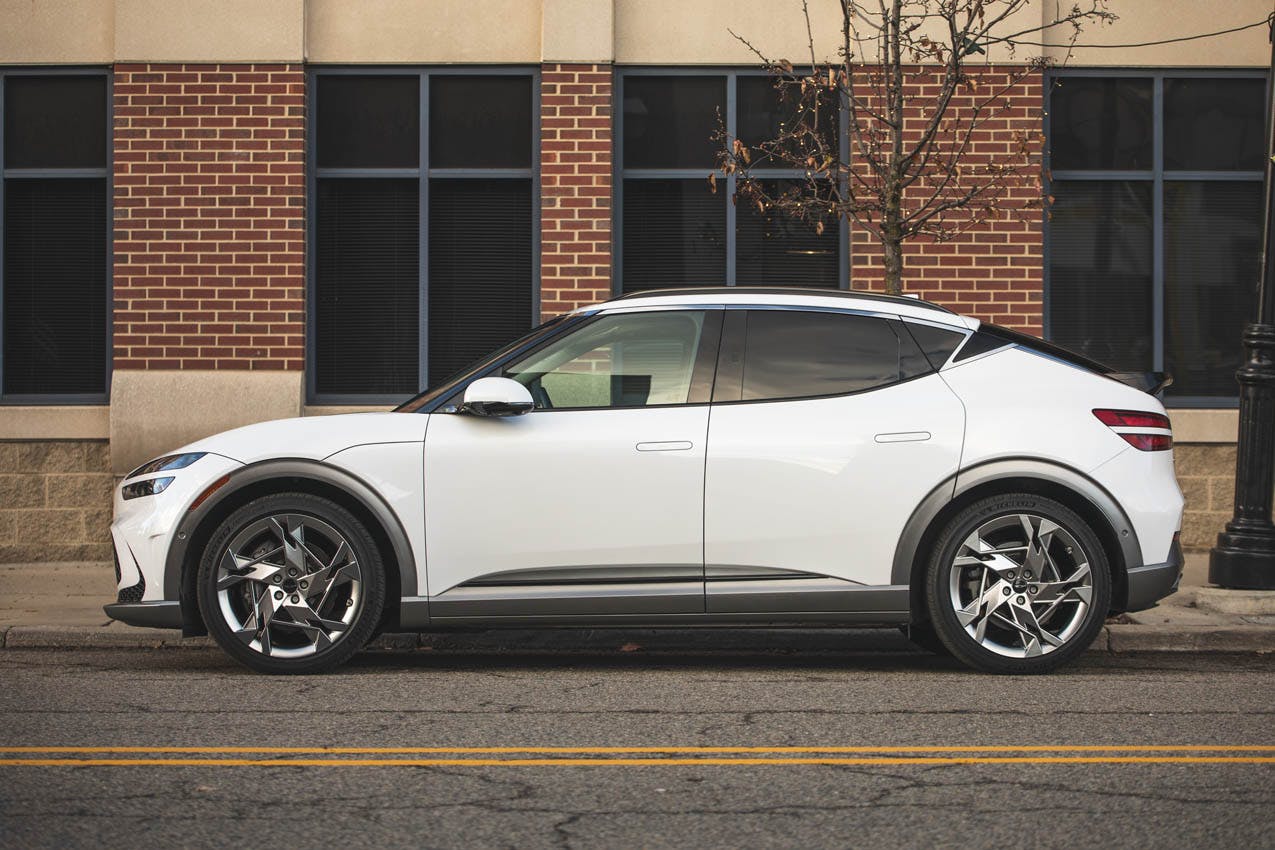











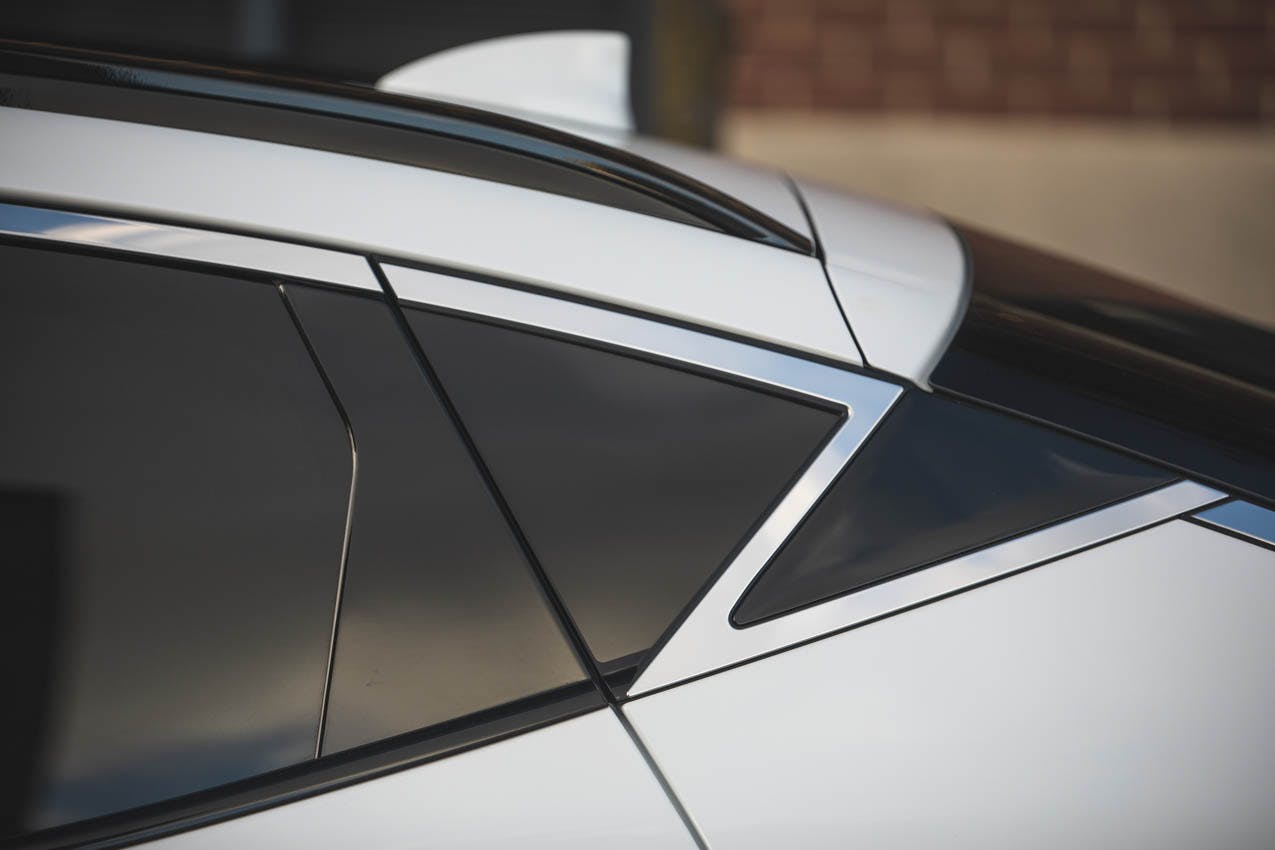









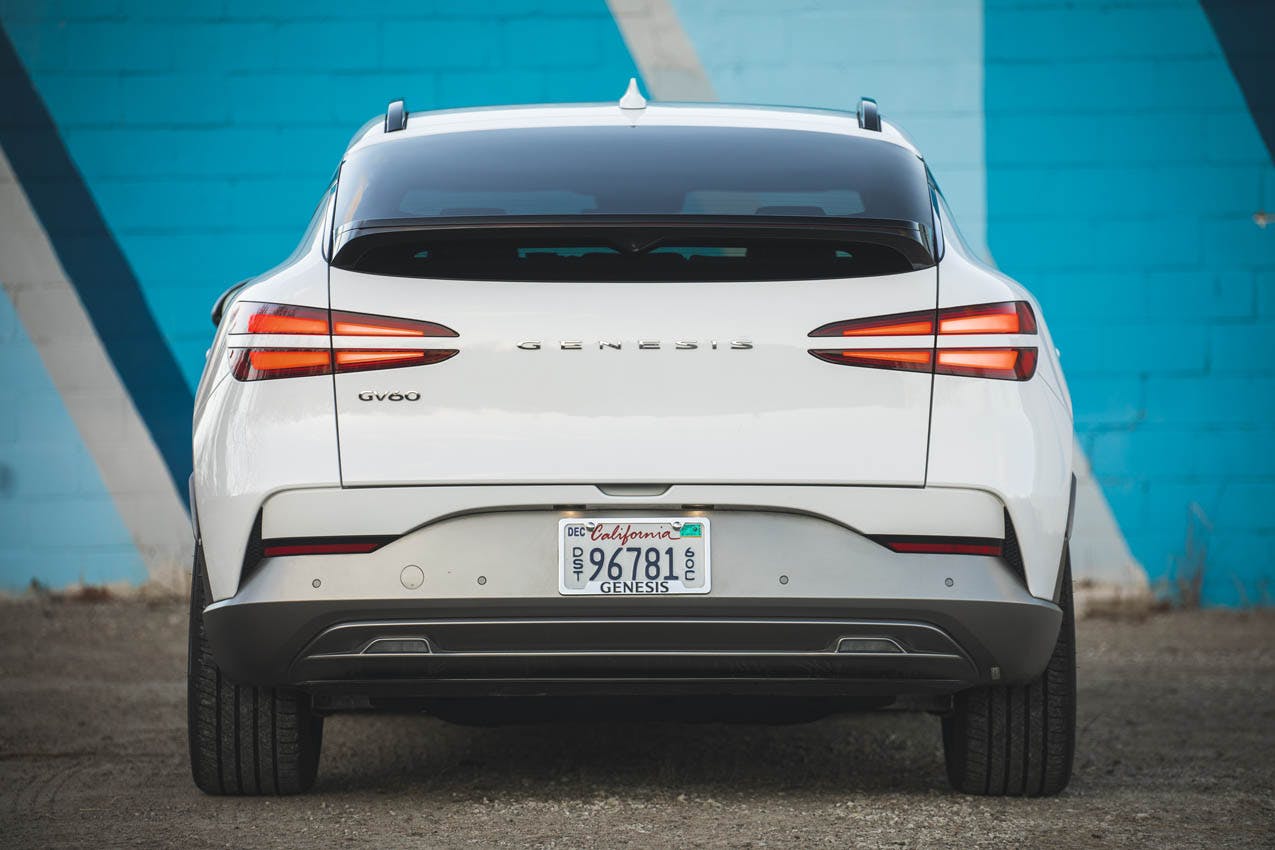
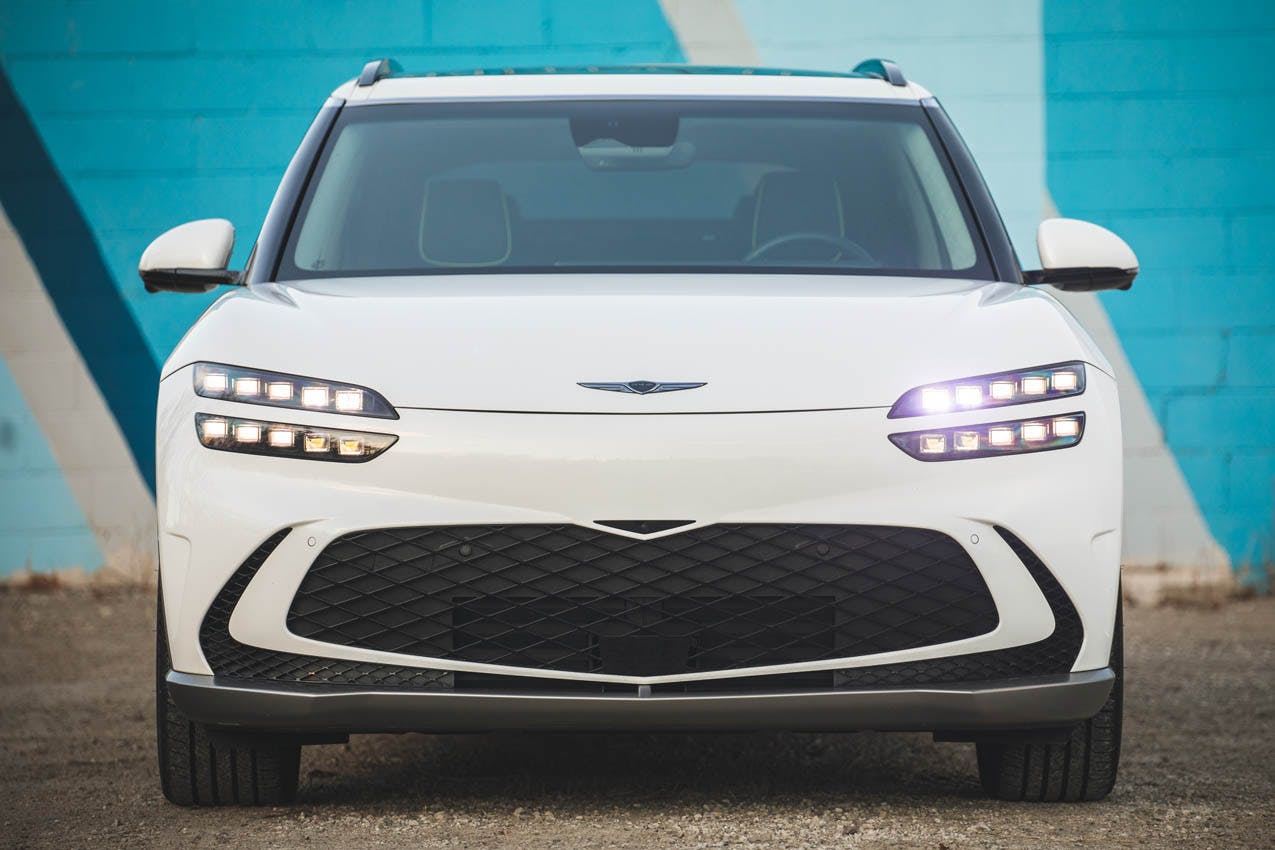
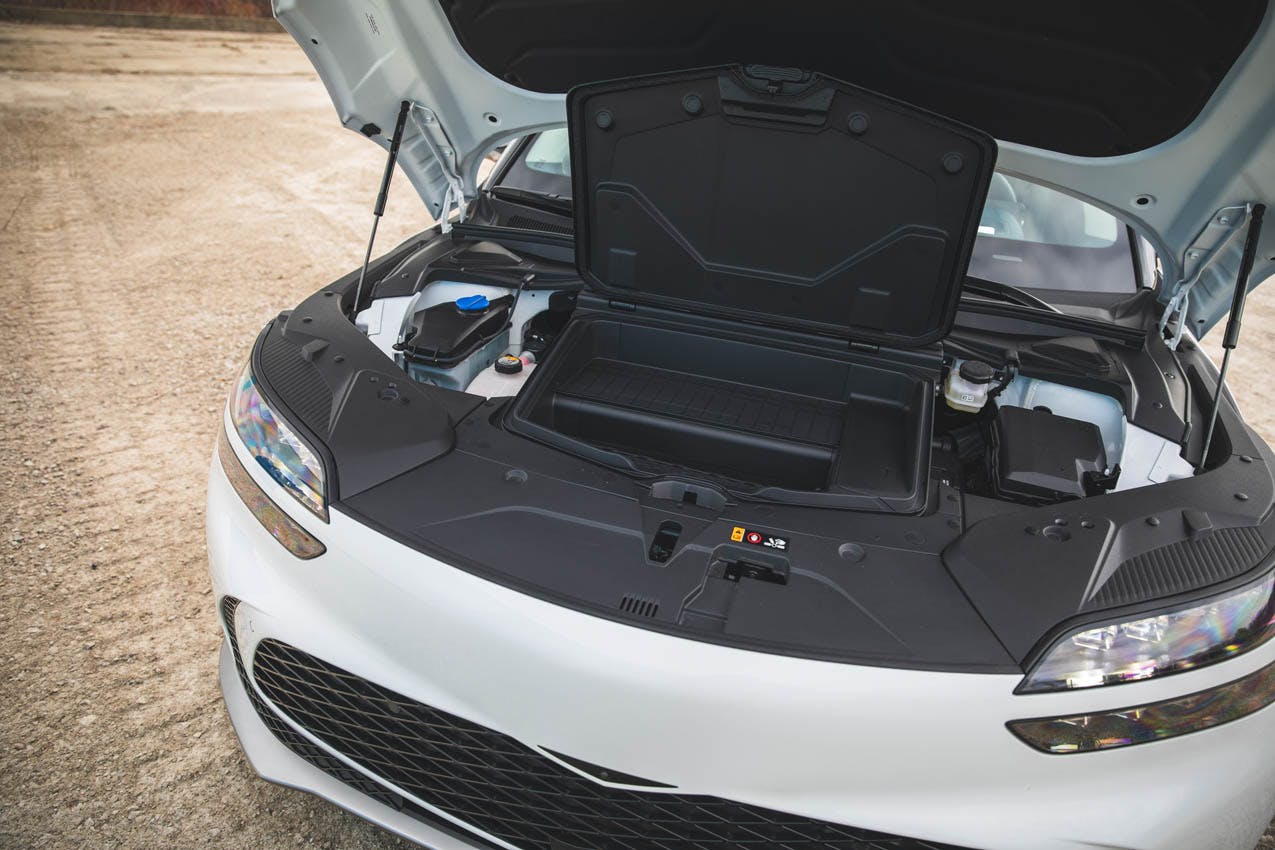

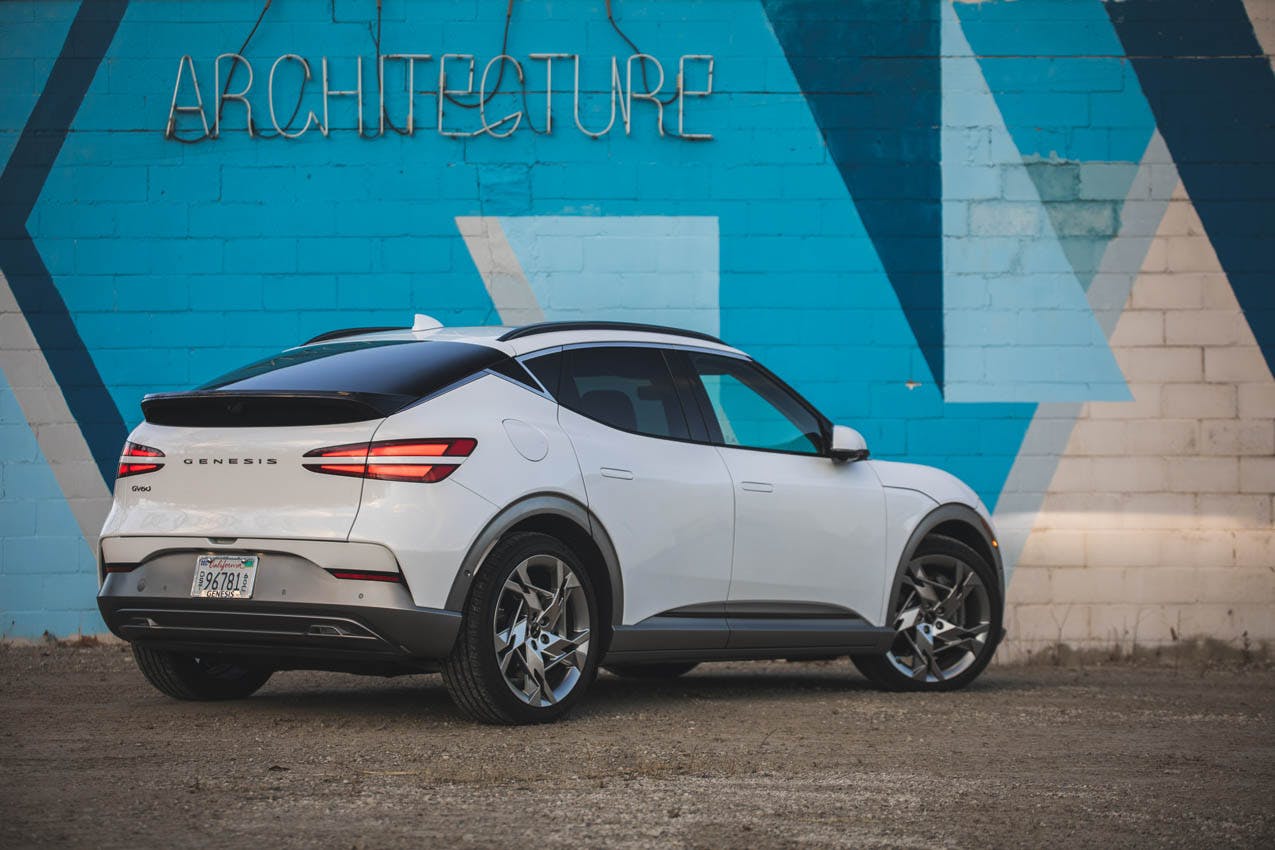
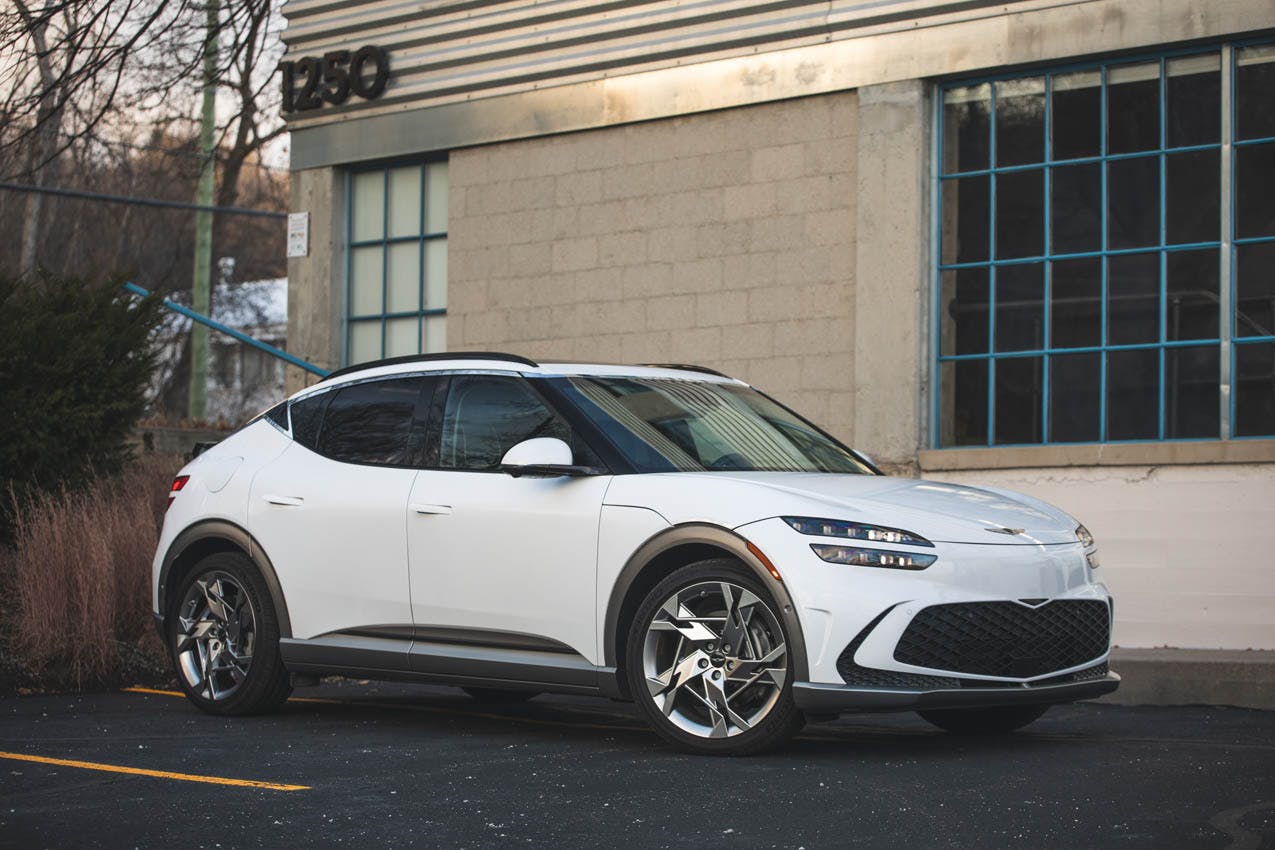


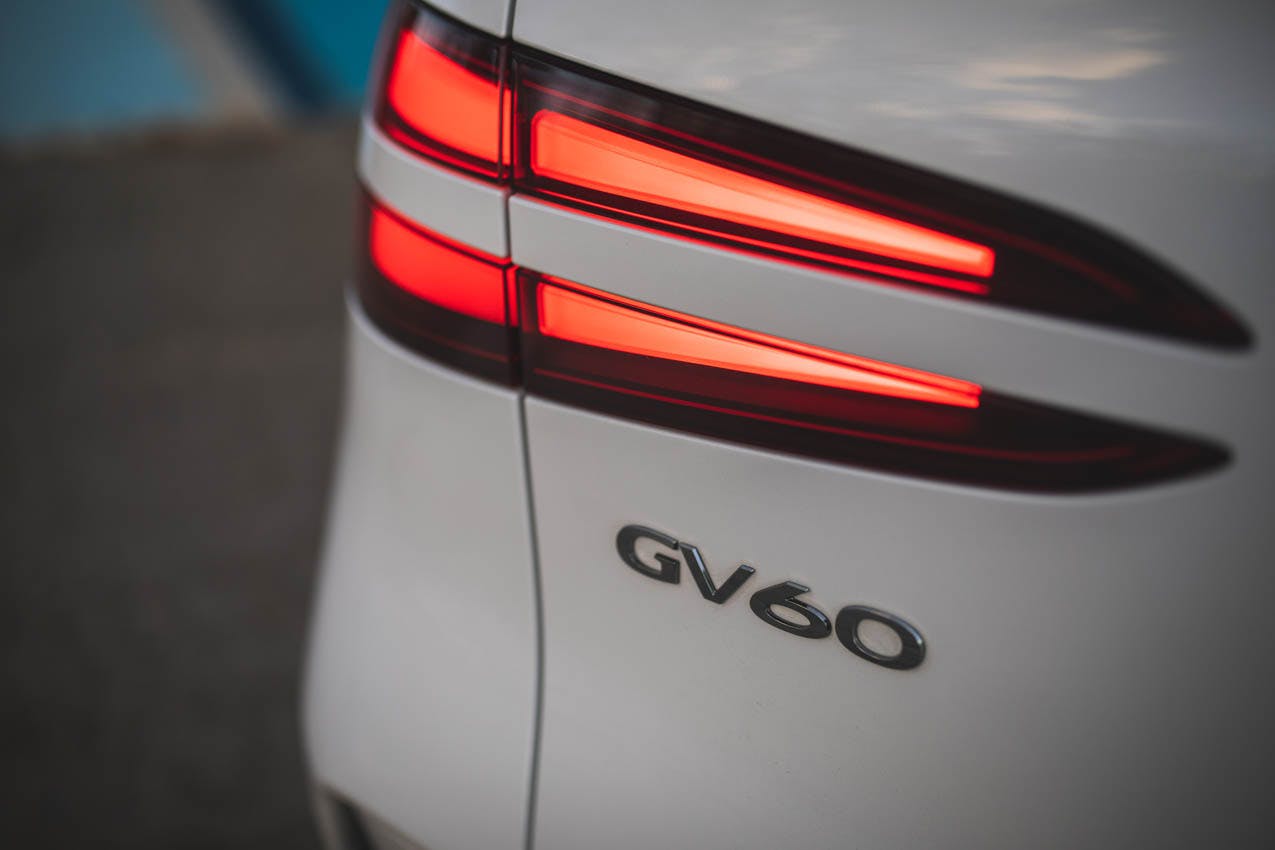
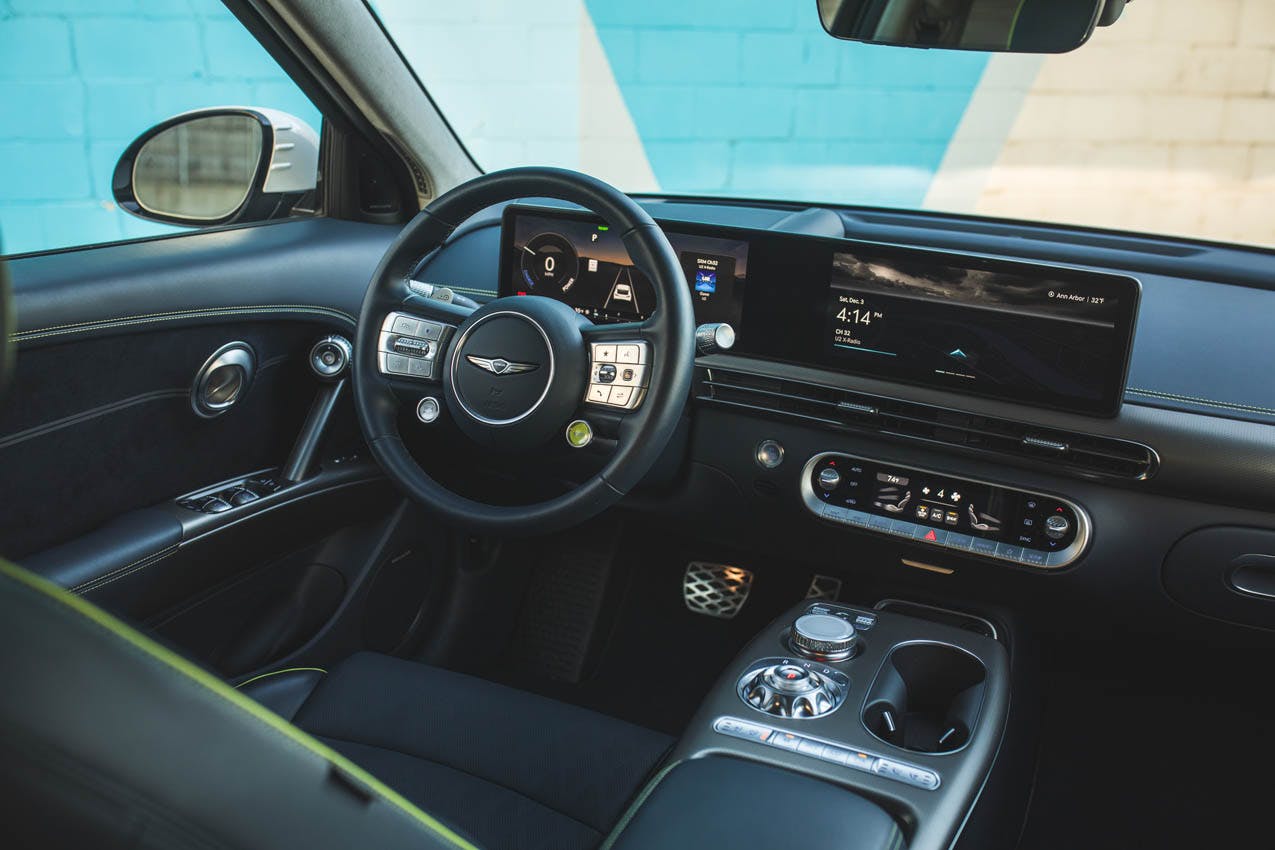
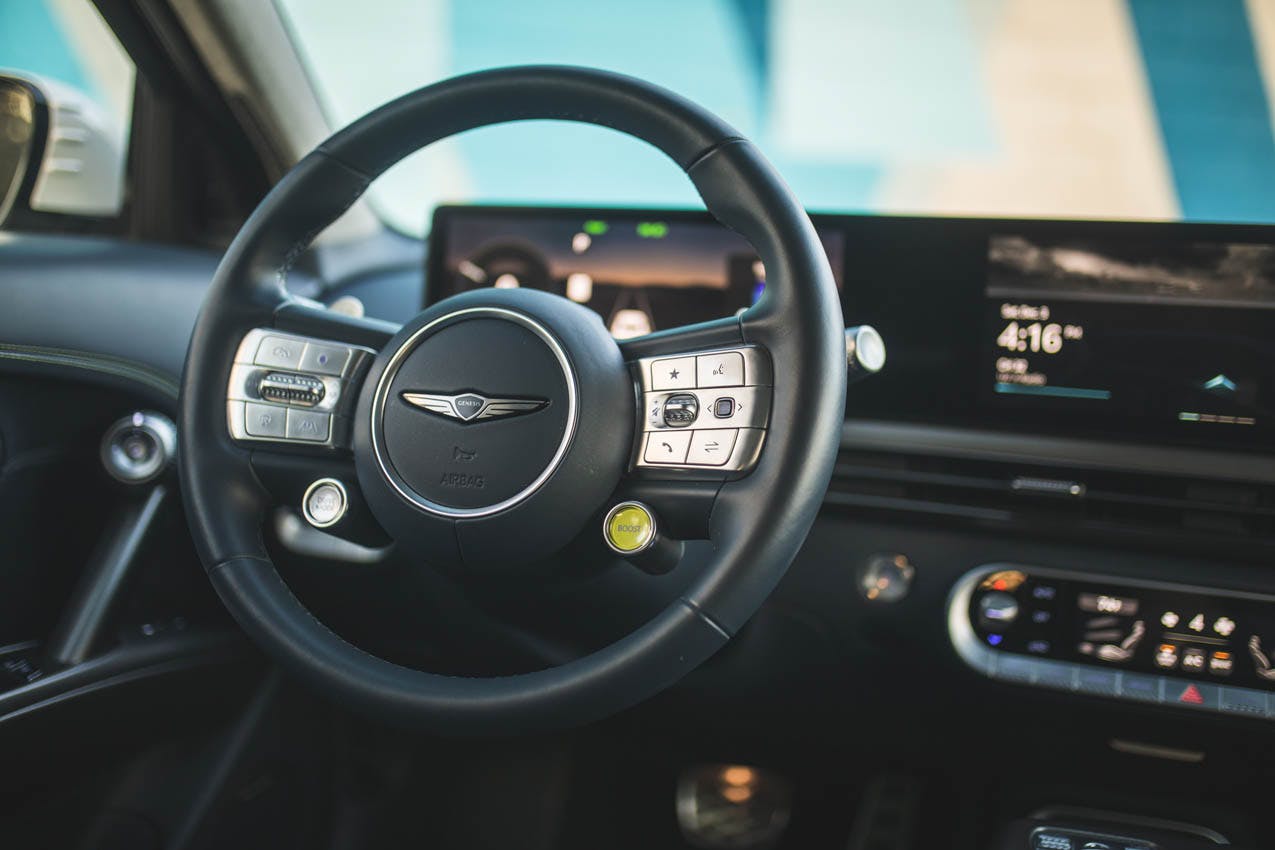
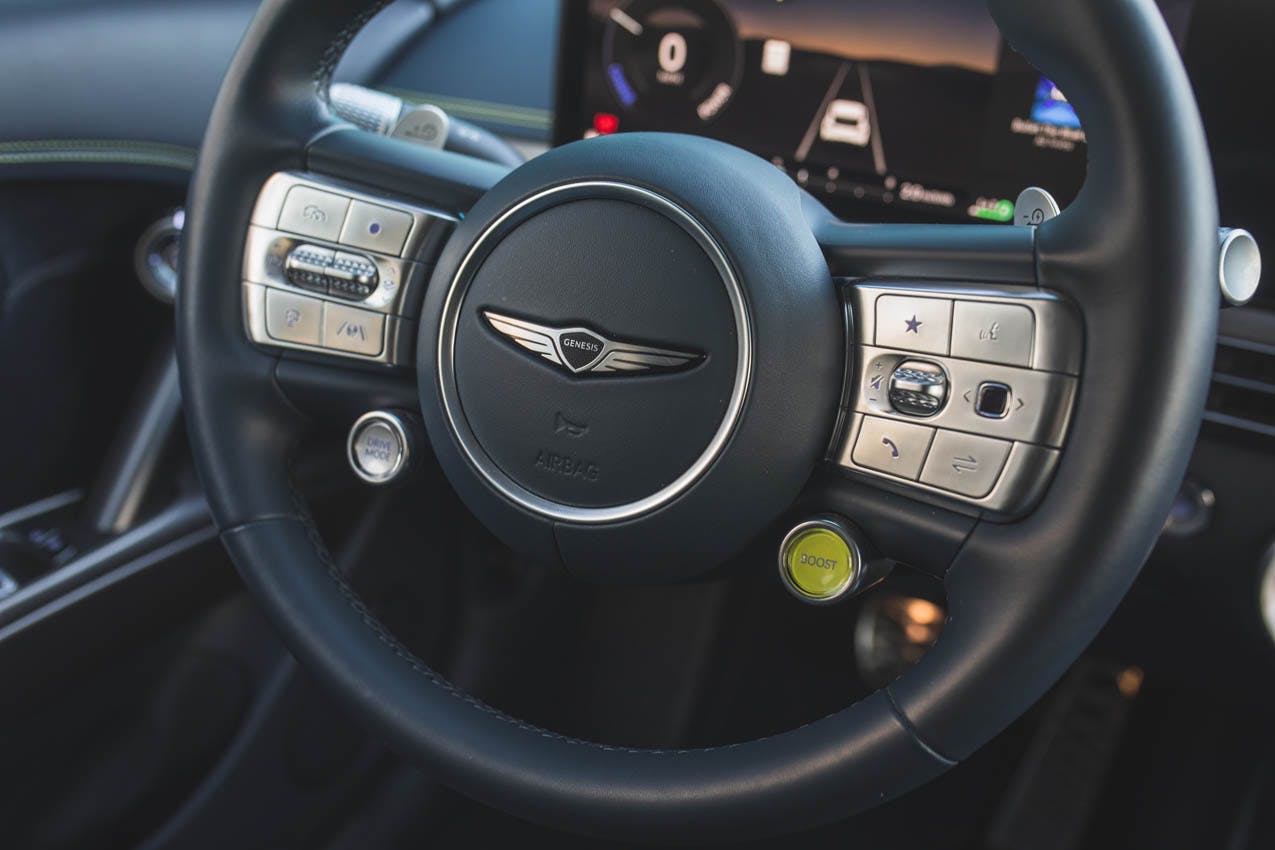
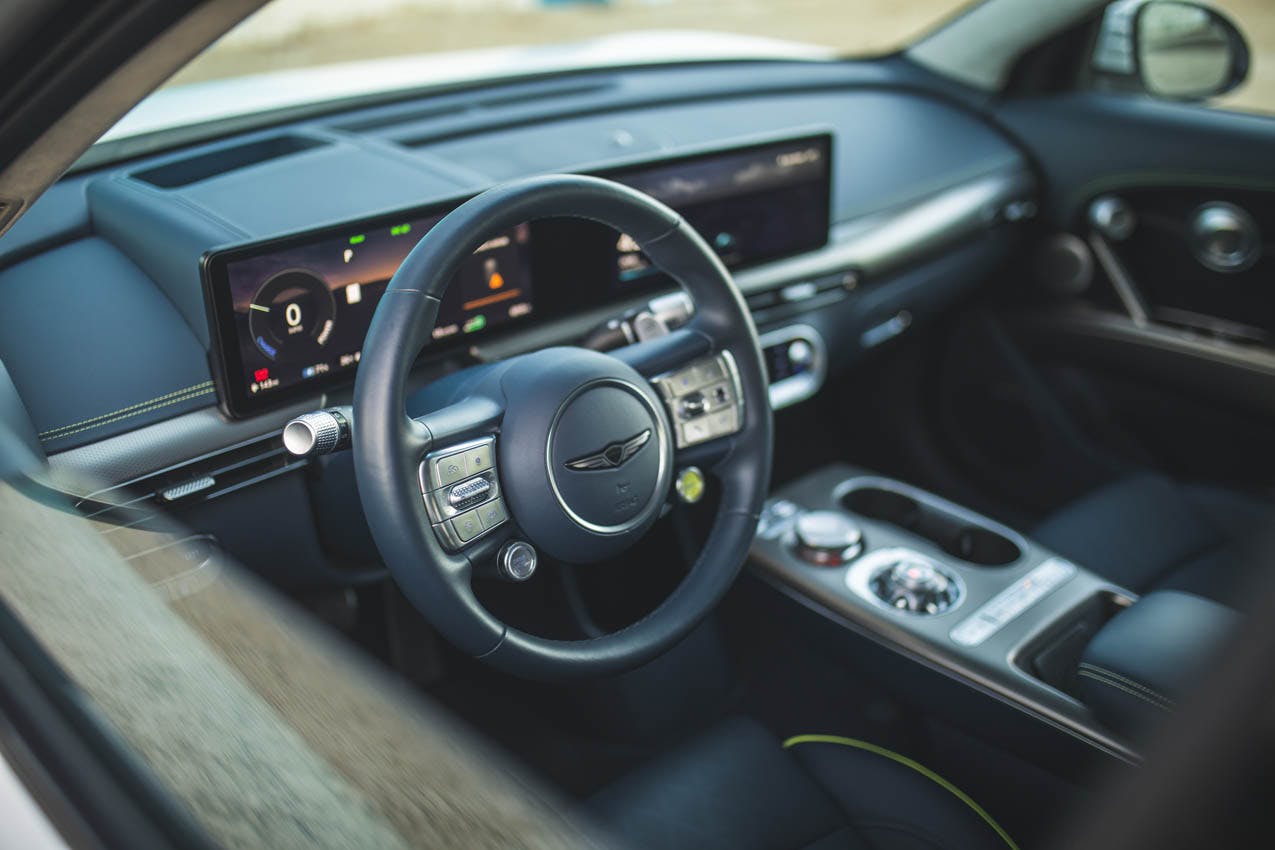
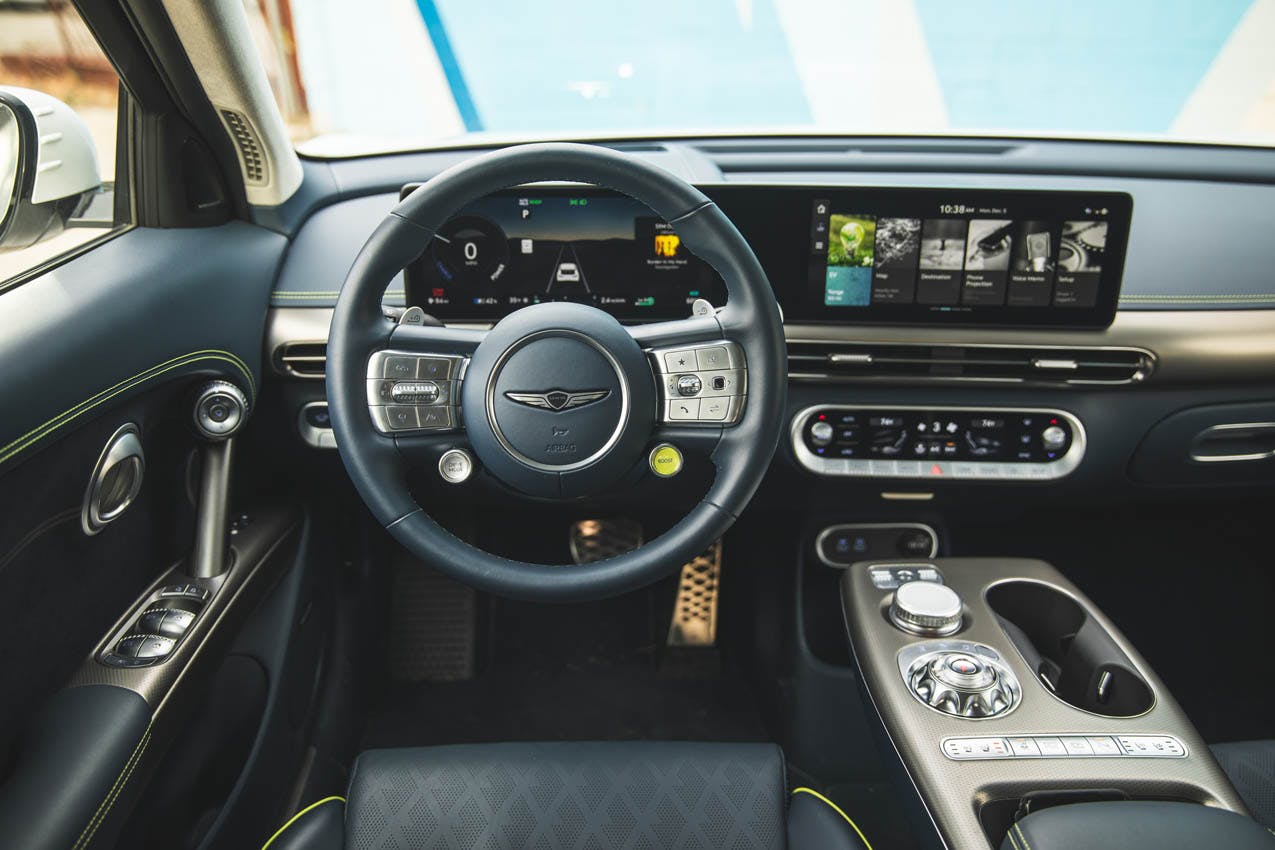
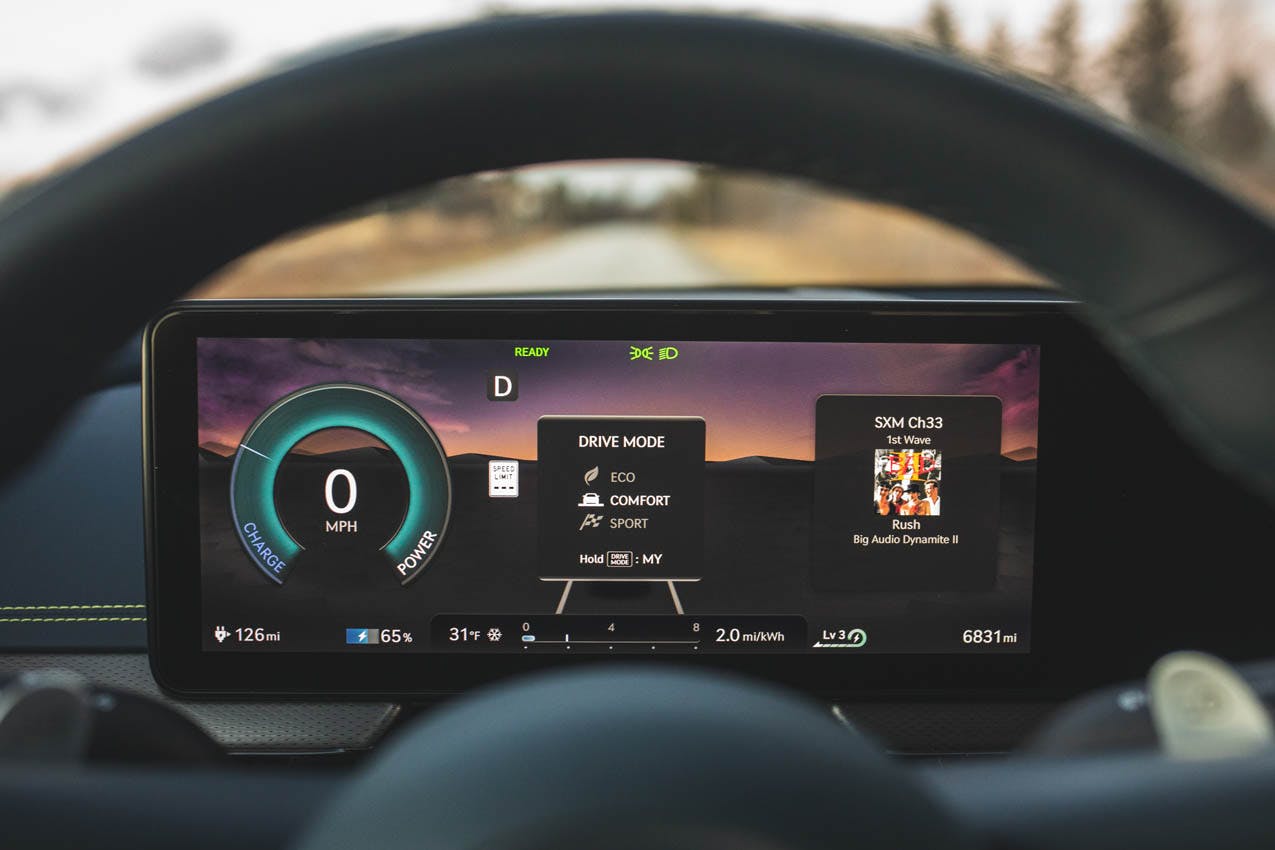






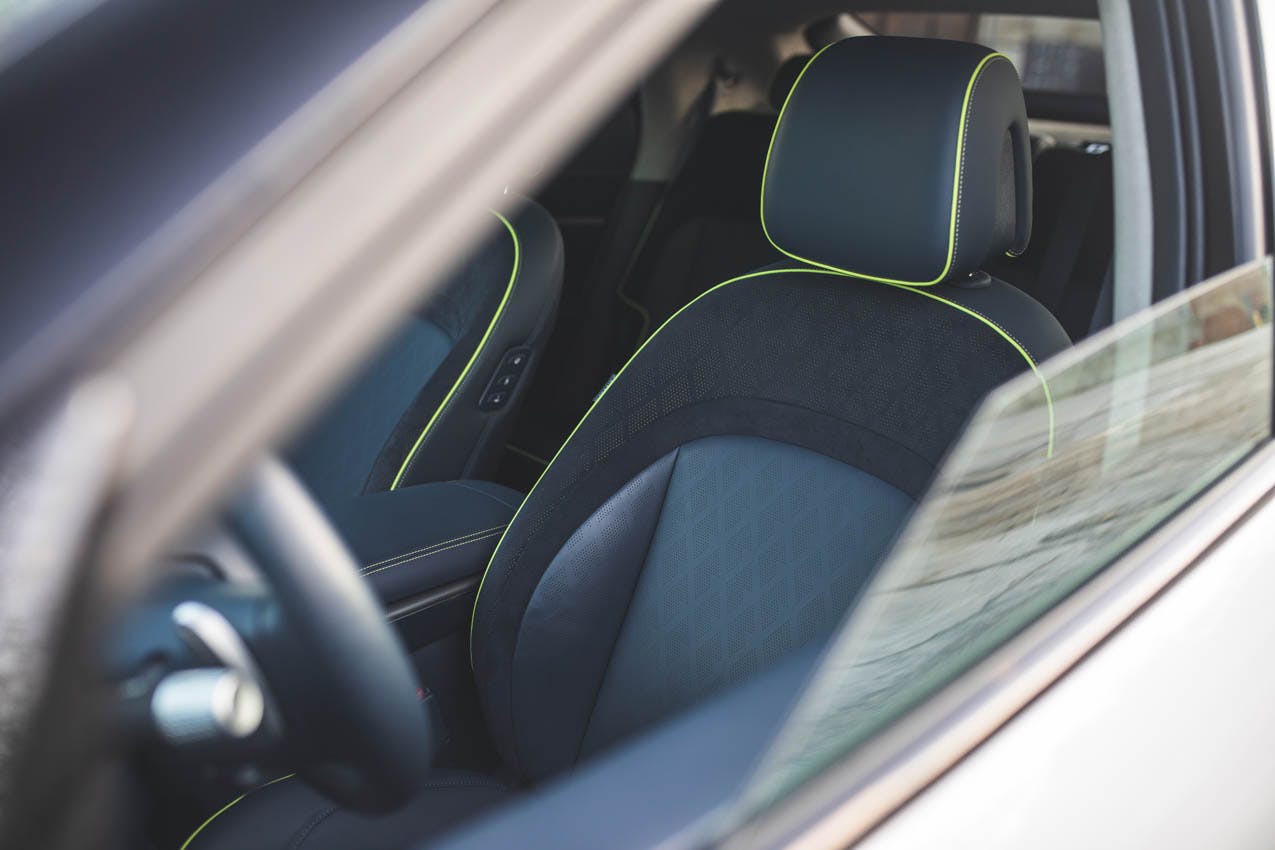










































I disagree completely with the styling opinion. I, and most other Youtube reviews, think is a beautiful vehicle. And one reason I got the GV60 over the Mach-E…the Mach-E does not have HUD or ventilated seats on any trim level. If I’m going luxury, I want/need those features. What new car doesn’t offer a HUD???? And the GV60 is wonderful to drive, so smooth and quiet. But put it in Sport mode and hit the boost button…wow!
I think this Genesis looks good. It’s not the styling king but it’s pretty good. Frankly while I think KIA/Hyundai can make good cars their EV’s are not as well sorted out as some of their competitors in the way they drive. I’m in no rush to get one. I would rather have one of their vehicles with the TT V6.
Our GV60 Performance has generated a continual stream of unsolicited compliments since the day we brought it home.
The rear seatbacks also recline, but even at 6′ 2″, I have plenty of headroom in both rows.
It doesn’t handle like a Macan, but it also doesn’t ride like one (GV60 rides far better, even on its 21″ wheels)
If luxury and quiet is at all important to you, the GV60 is a far better choice than either the Ioiniq5 or EV6.
If you don’t care about comfort or quality in interior design, the Ioniq5 would be a better value.
If you don’t mind very limited headroom, a completely manual driver’s seat and want the fastest of the trio around a racetrack, the EV6 GT would be a better buy.
For us, the GV60 was an easy choice.
Beauty is clearly in the eye of the beholder. The GV60 has been almost universally praised for its exterior shape. Far more fluid and cohesive than the Ioniq with its creases that look like someone caved them in. The EV6 too is a little underwhelming imo. As to competitiveness between the the three EGMP cars, the GV60 is clearly more luxurious and better appointed feature-wise than either the Kia or Hyundai. But then again, opinions are like human rear ends – everyone has one and everyone is certain theirs doesn’t stink.